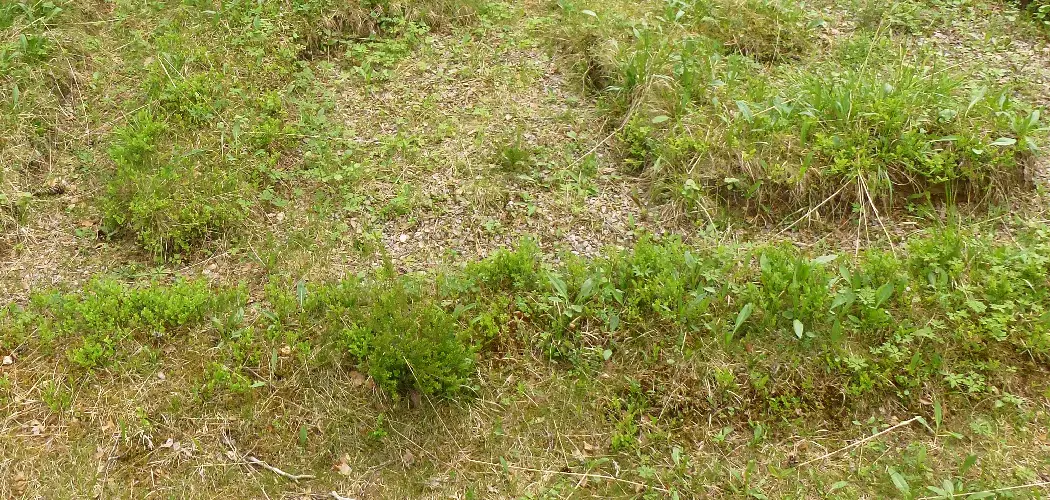Are the dreaded dry patches of grass in your yard ruining a perfectly manicured lawn? Don’t worry; there are things you can do to fix these ugly areas. In this blog post, we’ll discuss how to fix dry patches of grass in affected areas. From careful watering techniques to understanding why it’s happening in the first place, we’ll cover everything you need to know about fixing those pesky eyesores and keeping your lawn looking lush and beautiful for years to come.

Why Does My Grass Have Dry Patches?
Grass can develop dry patches for many different reasons. Some of the most common causes are lack of water, improper mowing, infrequent fertilization, and excessive foot traffic.
Lack of Water:
Without enough water, grass will become dried out and brown in certain patches. To fix this issue, it’s important to water your lawn regularly and deeply. Make sure that the grass is receiving about an inch of water a week, and be conscious of any dry or dead patches in your lawn, as they will need more frequent watering.
Improper Mowing:
If you’re mowing your grass too short, then it won’t have enough foliage to absorb sunlight and photosynthesize, which can create areas of discoloration on the lawn. To avoid this issue, make sure your mower blades are sharp and set them at a higher level to allow for more shade coverage.
Fertilization:
Grass needs proper nutrients in order to remain healthy and vibrant. Without regular fertilizer applications, certain patches of grass may become unhealthy and dry. Make sure to use a fertilizer that is tailored for your type of grass, and spread it out evenly across the entire lawn once every few months or so.
Excessive Foot Traffic:
The grass is sensitive to heavy foot traffic and can quickly become damaged if certain areas are walked on too often. If you have an area of your lawn that receives high amounts of foot traffic, it’s important to either restrict access or aerate the soil beneath it frequently in order to keep it healthy.
Knowing why your grass has dry patches is only half the battle – now that you know what’s causing them, you can implement solutions accordingly! Taking proper care of your lawn will ensure that it stays green and healthy all year round. With a bit of knowledge and effort, you can have beautiful green grass in no time.
9 Methods How to Fix Dry Patches of Grass
1. Water the Grass Deeply and Regularly.
One of the best ways to fix dry patches of grass is to water it deeply and regularly. Deep watering encourages the roots of the grass to grow deeper into the soil, which makes the grass more drought-resistant. Additionally, deep watering helps to break up compacted soil, which can improve drainage and prevent future dry patches.
2. Aerate the Soil.
Aerating the soil around dry patches of grass can also help to fix the problem. Aeration involves making small holes in the soil, which allows water and air to reach the roots of the grass more easily. This can help to improve drainage and prevent compaction, both of which can contribute to dry patches.
Aeration can be done manually with a garden fork or an aerating machine. Make sure to aerate evenly, making sure each dry patch receives the same amount of attention. Once the aeration is complete, water the grass thoroughly to help establish a better root system.
3. Apply Mulch around the Base of the Plants.
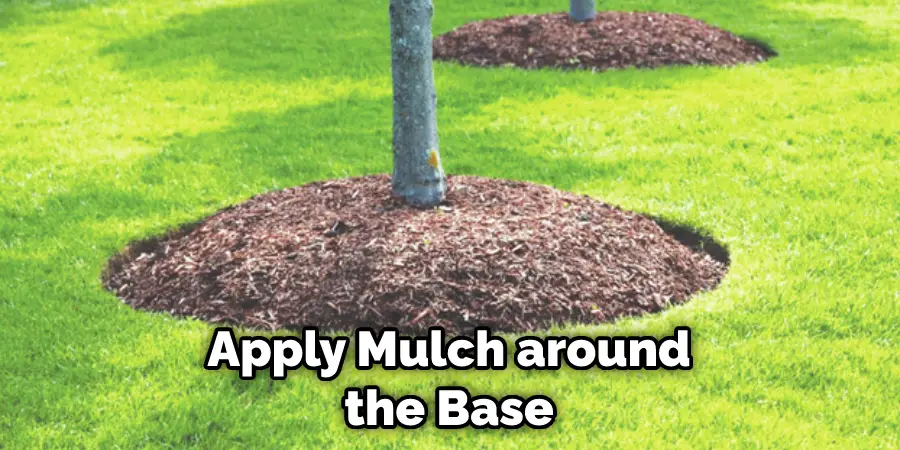
Applying mulch around the base of plants can also help to fix dry patches of grass. Mulch helps to retain moisture in the soil, which can prevent evaporation and keep the roots of the grass cooler in hot weather. Additionally, mulch can help to prevent weeds from competing with the grass for moisture.
When applying mulch, it is important to not put down too much as this can smother the grass and cause even more damage. Apply a thin layer around the base of the plants and water it in well to help it settle into place. Once the mulch has been applied, it should be checked periodically to make sure that it is not too thick and needs to be replenished.
4. Use a Lawn Roller.
Using a lawn roller can also help to fix dry patches of grass. A lawn roller is a tool that is used to flatten out bumps in the lawn and make it more level. This can help to improve drainage and prevent water from pooling in low-lying areas, both of which can contribute to dry patches. To use a lawn roller, fill it with water or sand and then push it across the lawn.
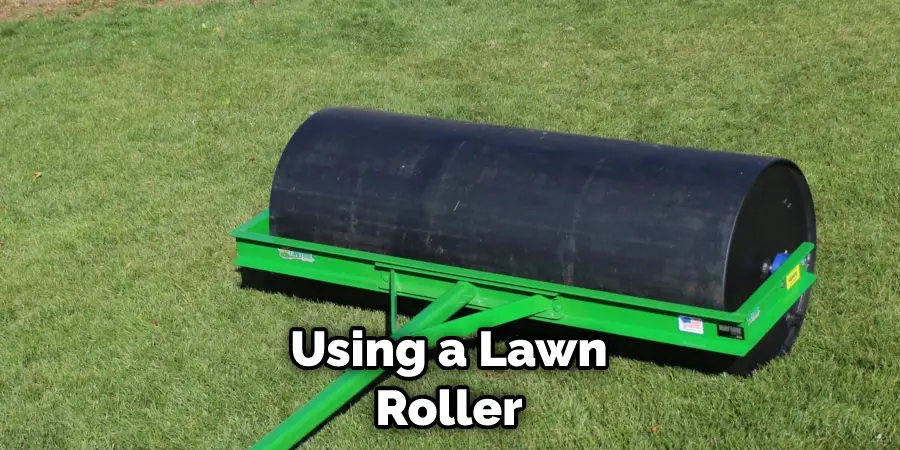
Make sure to go over each patch of grass multiple times until the area is level. This should help to reduce the severity of any dry patches. If you don’t have access to a lawn roller, you can always use an old tire or other heavy objects instead. Although it may not be as effective, it should still help to level out the ground and improve drainage.
5. Overseed the Area with New Grass Seed.
Overseeding an area with new grass seed is another effective way to fix dry patches of grass. This method involves spreading new seeds over an area where the grass is thin or patchy. The new seed will germinate and fill in any bare spots, creating a thick, lush lawn. You can purchase grass seed from any gardening or home improvement store.
When overseeding, it is important to choose the right type of grass seed for your region and lawn type. If you are unsure what kind of seed to use, consulting a local landscape expert can help ensure that you select the appropriate variety for your area. Additionally, be sure to prepare the soil properly before spreading the grass seed.
Loosen the soil and rake it smooth to create a bed for the seeds to settle in. Once you have spread the new seed, lightly water it to encourage germination. With proper care and maintenance, your grass will soon look healthy and green again!
6. Fertilize the Grass.
Fertilizing the grass can also help to fix dry patches. Regular fertilization provides essential nutrients and helps the grass fight off environmental stress. Choose a fertilizer that is designed for your type of grass and follow the directions on the label when applying it. Be sure to water deeply after applying fertilizer so that it can enter the soil more easily.
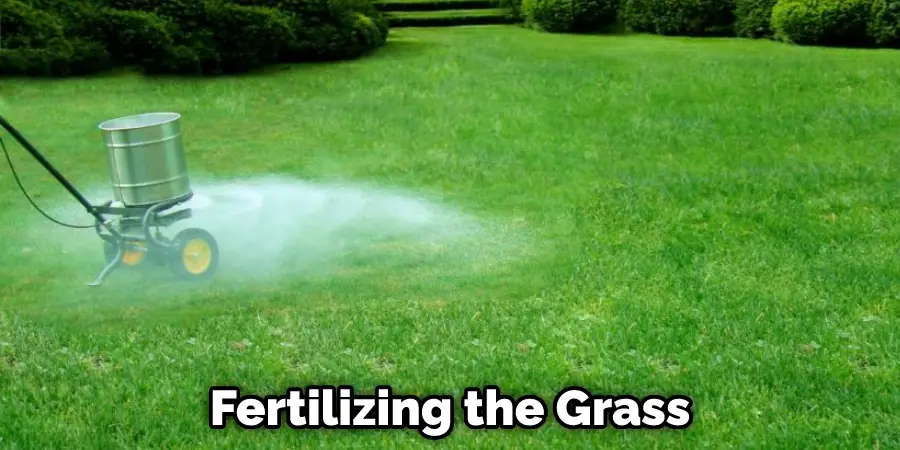
Additionally, apply a slow-release granular fertilizer every few months during spring and summer to ensure that your grass has the nutrients necessary to stay healthy. However, be sure not to overfertilize, as doing so can cause the grass to become too lush and actually lead to more dry spots.
7. Apply Compost or Topsoil.
Applying topsoil or compost around dry patches of grass can also help to fix the problem. This helps to provide essential nutrients to the grass and soil. The compost or topsoil should be applied around the edges of the dry patches in a thin layer, working it into the existing soil with a rake.
It’s important not to apply too much, as this can cause an imbalance of nutrients which may damage, rather than help, your lawn. While topsoil is necessary for a healthy lawn, too much can result in patches of grass that die out, leading to an uneven-looking lawn. If you are unsure how much compost or topsoil to apply, it’s best to speak with your local gardening or landscaping expert.
8. Change the Cutting Height of Your Mower Blades.
The cutting height of your mower blades can also impact the health of your lawn, as cutting the grass too short can cause dry patches. The ideal mowing height for most lawns is between three and four inches. In areas with more shade, it’s best to set your blades at the highest setting. This will help protect the grass from sun damage and reduce its susceptibility to dry patches. Mowing too high also encourages healthier root systems, which in turn helps prevent dry spots from forming.
9. Test Your Soil Regularly.
Testing your soil’s pH levels is a great way to identify potential problems before they become larger issues. If you find that your soil has an abnormally low pH level, this could be causing your dry patch problem, as certain nutrients may not be readily available to grass plants. Adjusting the pH levels of your soil can help promote better health in your lawn and prevent dry patches from appearing.
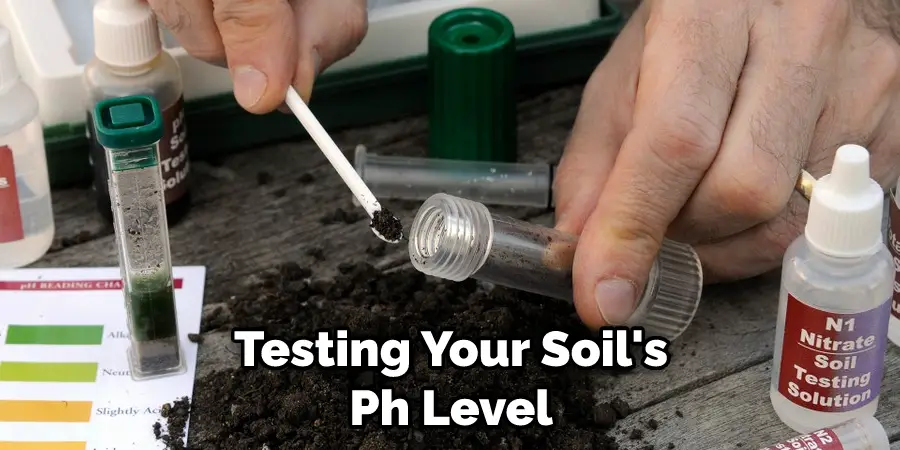
Conclusion
If your lawn is looking patchy and dry, don’t fret. With a little time and effort, you can get it looking healthy and green in no time. Be sure to water regularly, fertilize properly, and mow at the right height to give your grass the best chance to thrive. Soon enough, those dry patches will be a thing of the past. Thanks for reading, and we hope this has given you some inspiration on how to fix dry patches of grass!
You can check it out to Lay Pavers Around a Pool
About
Outdoor Fixes is a distinguished figure in the world of Diy design, with a decade of expertise creating innovative and sustainable Diy solutions.
His professional focus lies in merging traditional craftsmanship with modern manufacturing techniques,
fostering designs that are both practical and environmentally conscious. As the author of diy,
outdoorfixes delves into the art and science of outdoorfixes-making, inspiring artisans and industry professionals alike.
Education RMIT University
(Melbourne, Australia) Associate Degree in Design (Outdoor Fixes) Focus on sustainable design, industry-driven projects,
and practical craftsmanship. Gained hands-on experience with traditional and digital manufacturing tools, such as CAD and CNC software.
Nottingham Trent University
(United Kingdom) Bachelor’s in outdoorfixes.com and Product Design (Honors) Specialized in product design with a focus on blending creativity with production
techniques. Participated in industry projects, working with companies like John Lewis and Vitsoe to gain real-world insights.
Publications and Impact
In diy, Outdoor Fixes his insights on indoor design processes, materials, and strategies for efficient production.
His writing bridges the gap between artisan knowledge and modern industry needs, making it a must-read for both budding designers and seasoned professionals.

